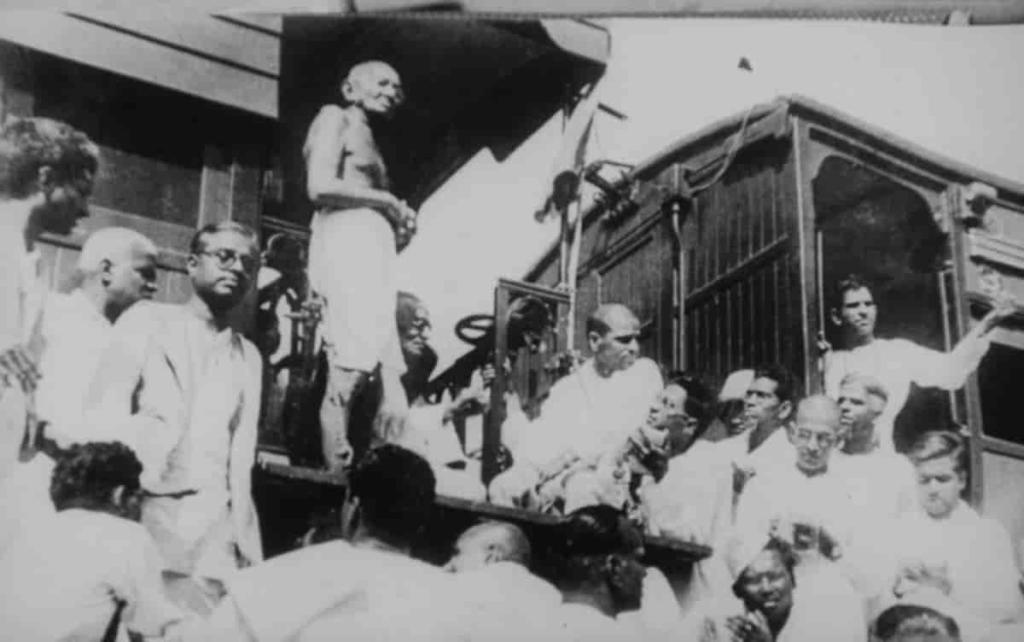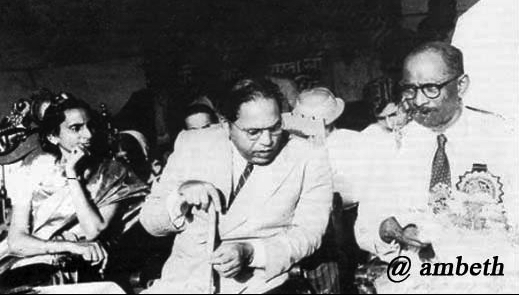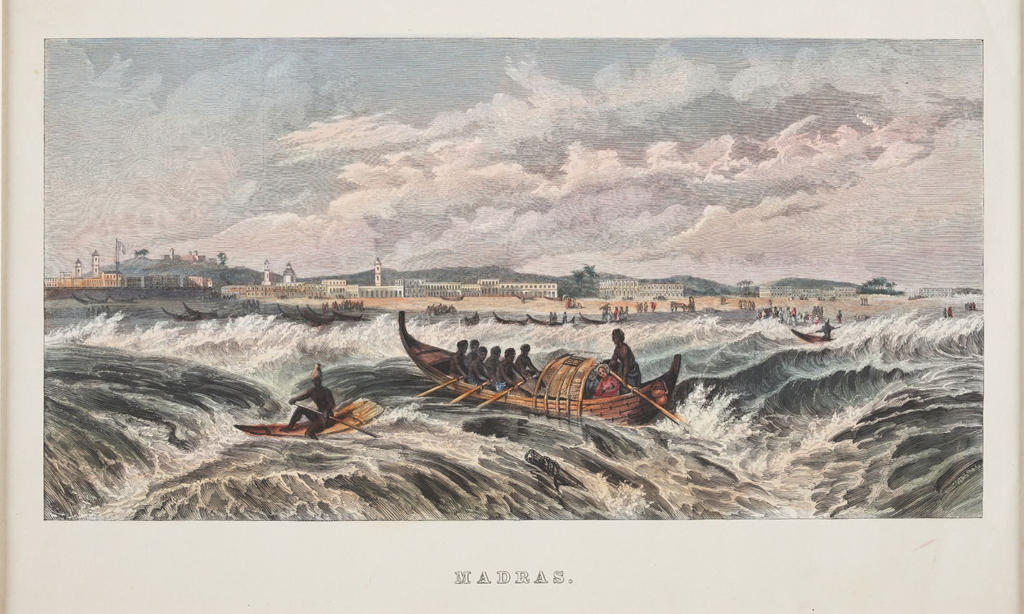
Madras, 1848, engraving © Sarmaya Arts Foundation
Over the centuries Nestorian merchants and Arab navigators, Greek philosophers and Roman centurions, ‘Portugee’ hidalgos and Dutch burghers, English East Indiaman and French musketeers, even Danish sailors and German scholars descended on Coromandel’s ancient shores in search of diamonds and pearls, ivory and sandalwood, cordage and sails and, above all, the finest cottons in the world.
– From First City of Modern India by S Muthiah
As the late-great journalist, writer and Madras-Chennai chronicler notes, there were no dearth of reasons why a self-respecting trader with ambitions of global dominance would seek a foothold on the glorious Coromandel coast. Naturally, it wasn’t surprising when the British East India Company (EIC) started nosing around in the early 17th century, after successfully setting up its first trading post on the Subcontinent in the Surat of 1619. The main focus of their trade was textiles—all that fine cotton grown, spun, dyed and skillfully woven and printed in this land. After making two landings on the east, at Masulipatnam (present-day Machilipatnam in Andhra Pradesh) and Armagon (Durgarajupatnam, also in AP), the EIC got lucky.
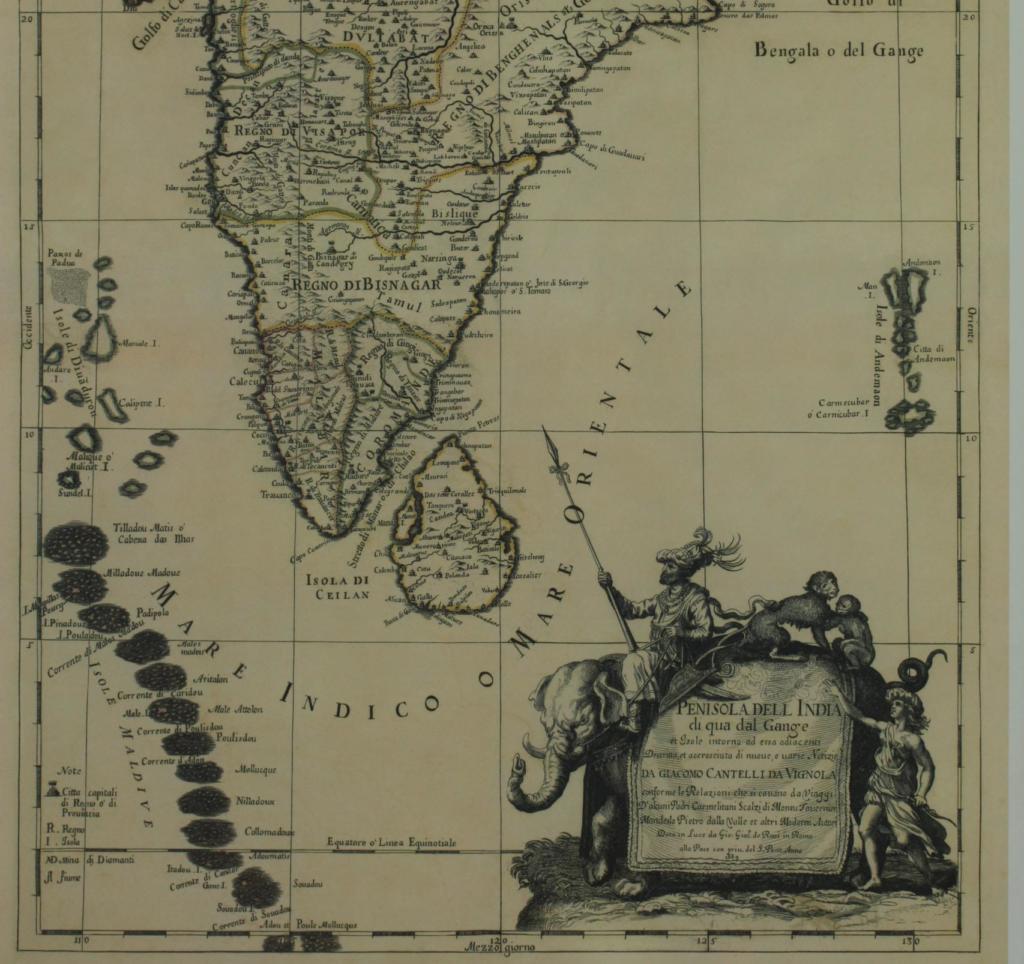
Penisola Dell India or Peninsular India, 1683 © Sarmaya Arts Foundation
In 1639, the British trading company got permission to set up a factory (akin to a free-trade zone where foreign merchants or ‘factors’ could do business with locals) on a thin strip of the coast, measuring about three square miles. They received it in the form of a grant from the Nayakas, feudatory rulers of the region under the Vijayanagara kings. This land was christened Madraspatnam for its owners, the Madre or Madeiros, a prominent Portuguese family of San Thome. Madras referred first to the city and, as the Empire strengthened its hold on the Subcontinent, to their larger administrative province or Presidency in the south. In 1996, Madras was rebranded ‘Chennai’, a word of equally vintage origins. Chennapatnam was a village near Madraspatnam, was named for Chennakesava Nayak, a kinsman to the king of Vijayanagara at Chandragiri, the last capital of the empire. During the early days of the EIC, Chennapatnam was founded to house the various textile workers who were key to the aforementioned fortunes.
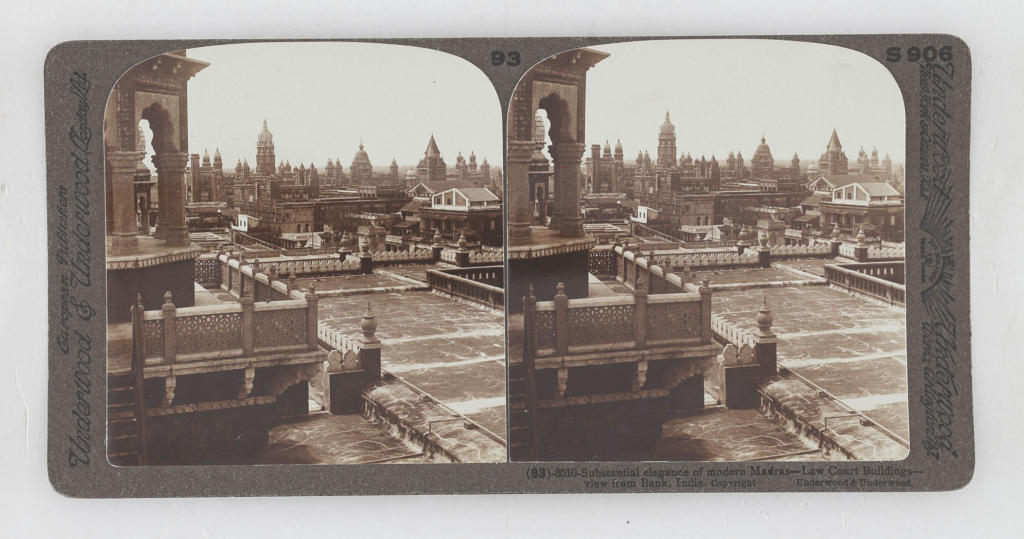
A view of Madras encompassing Law Court Buildings, 1900s, stereoscopic photograph © Sarmaya Arts Foundation
S Muthiah makes the case that Madras was, in fact, the first city of modern India. (Bombay was officially given that title—Urbs Prima in Indis—inscribed on the Gateway of India.) It was in the larger Madras Presidency that the Indian army was birthed, the first municipal corporation in the country was established and where the first native revolt against British rule broke out, preceding 1857 by a few decades (see Vellore Mutiny below). Culturally too, Madras has a powerful legacy. From Bharatanatyam and Indo-Saracenic architecture, to the universally loved Madras check and the longest-running music season in the country—it all started right here on this little strip of the Coromandel coast.
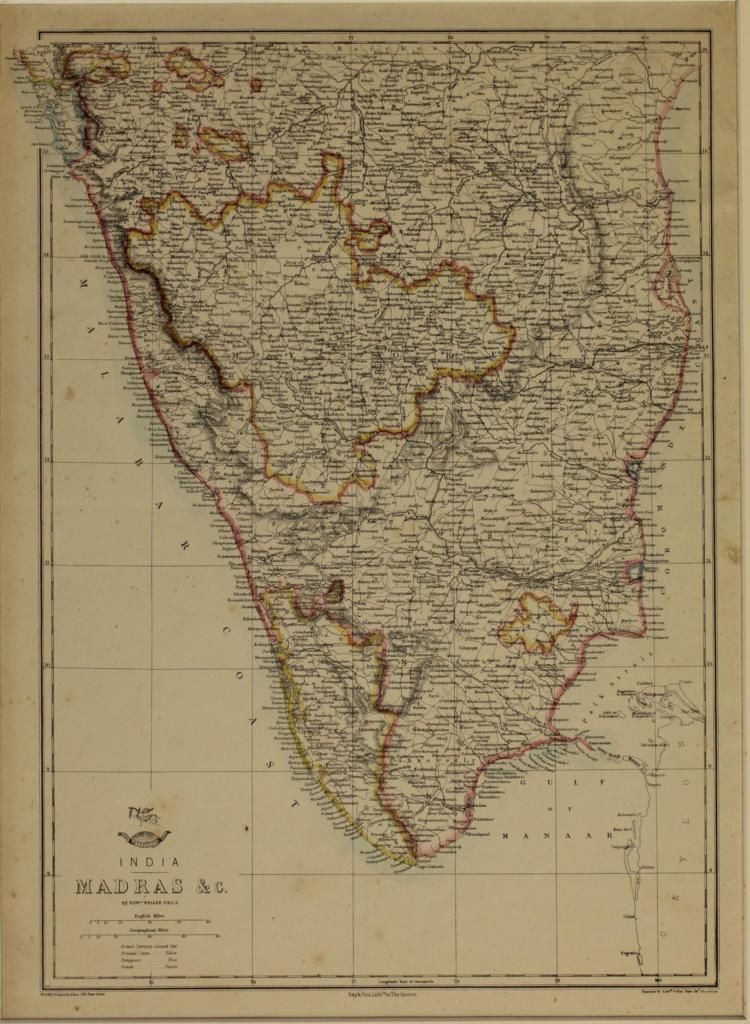
Madras & C, a political map of southern India, 1858 © Sarmaya Arts Foundation
Out of the three provinces that British territory on the Subcontinent was broken up into, Madras Presidency was the first to be established, in 1652. (Bombay followed in 1668 and Bengal in 1699.) The Presidency of Fort St George, as it was first known, saw a tumultuous few initial decades, facing hostilities from the French, the Nawab of Carnatic, the Mughals and the Marathas. In the next century, the EIC would go to battle against the French (again), the Dutch and Haider Ali and Tipu Sultan of Mysore. With each win on the battlefield, new territories would be annexed to the lot of Madras Presidency. At its most expansive, this province would include parts of Tamil Nadu, Andhra Pradesh, Telangana, Karnataka, Kerala, Odisha and Lakshadweep. Briefly in the 18th Century, the term ‘Madras’ covered parts of Sri Lanka too. Languages spoken in Madras Presidency included Tamil, Telugu, Kannada, Tulu, Konkani, Malayalam, Sinhalese, Odia, Hindi and Urdu. This made for a secular mingling of aesthetics, dialects, cuisines and manners, which took on new life in the cosmopolitan air of Madras.
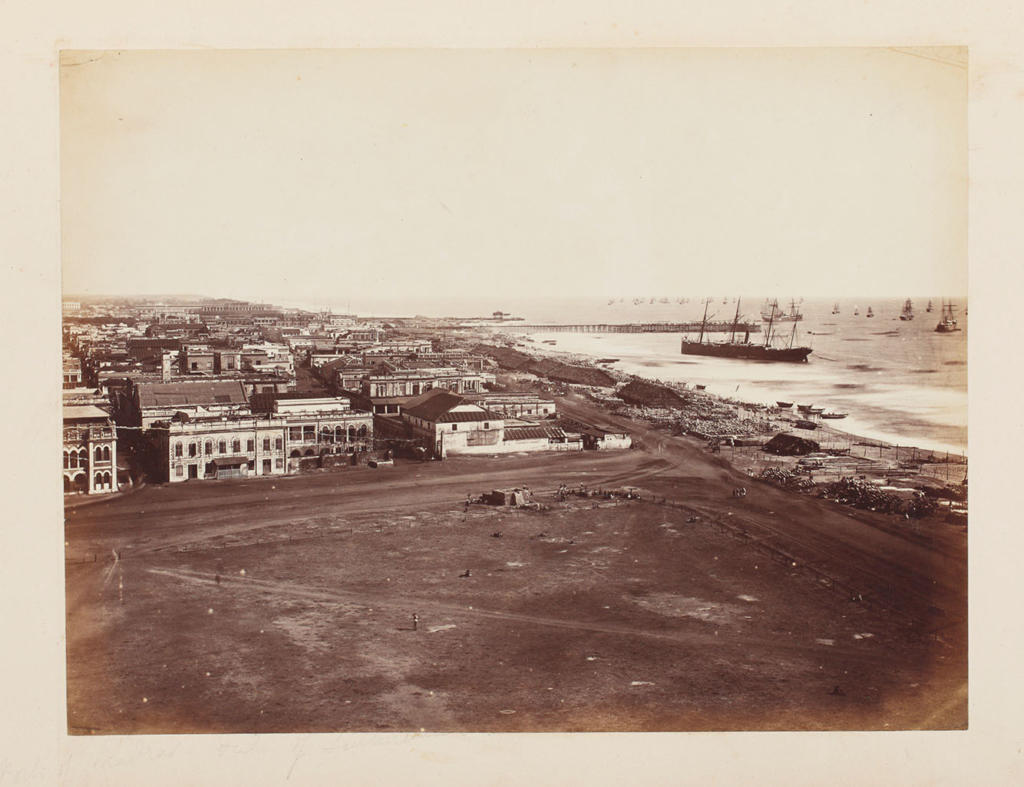
Port of Madras with a view of Parry’s Corner, the harbour and the pier, late 19th century, unidentified photographer © Sarmaya Arts Foundation
The history of the Madras Presidency is also the history of an embryonic nation finding its identity under colonial rule. Below are some key moments, movements and personalities from that period and region. This is not a comprehensive list, simply a very abridged and selective highlights reel—accompanied by objects from the Sarmaya archive—to illustrate the role of Madras in shaping what would in time become India.
Expanding borders
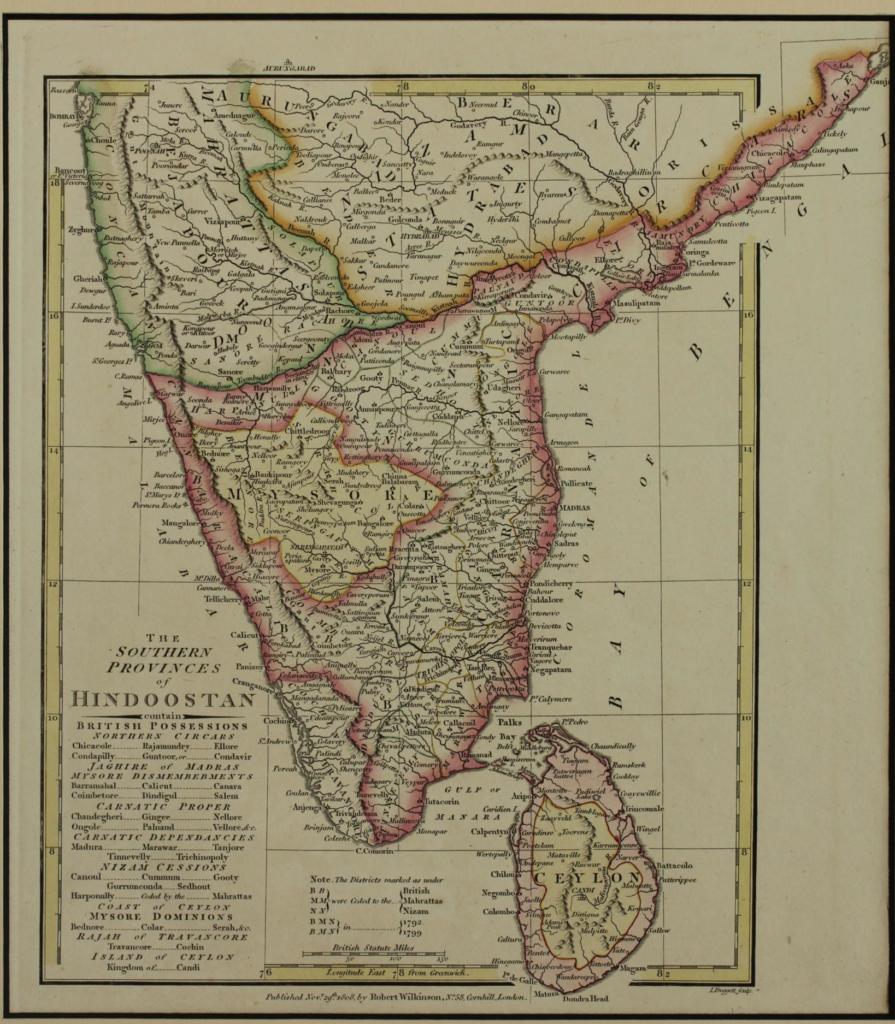
‘The Southern Province of Hindoostan’, 1808 © Sarmaya Arts Foundation
Among the EIC’s many bitterly fought military campaigns in the Subcontinent, three directly determined the contours of Madras Presidency. The three Carnatic Wars (1746-1763) were a power struggle between the English and the French, involving the native armies of the Mughals, the Nizam of Hyderabad and the Nawab of Carnatic; by the end of it, French influence in the region was decimated and eventually limited to Pondicherry. The four Anglo-Mysore wars, which started in 1767 and ended with the death of Tipu Sultan in 1799, likewise increased the expanse of the Presidency. By the start of the 19th Century, Madras Presidency had acquired territories across the south, including Salem, Coimbatore, Madurai, Udupi, Kasargod and Dakshina Kannada. Finally, with the EIC triumphing over the Marathas too in the final Anglo-Maratha war that ended in 1819, most of the south was covered by British rule—and the Madras Presidency.
Military might
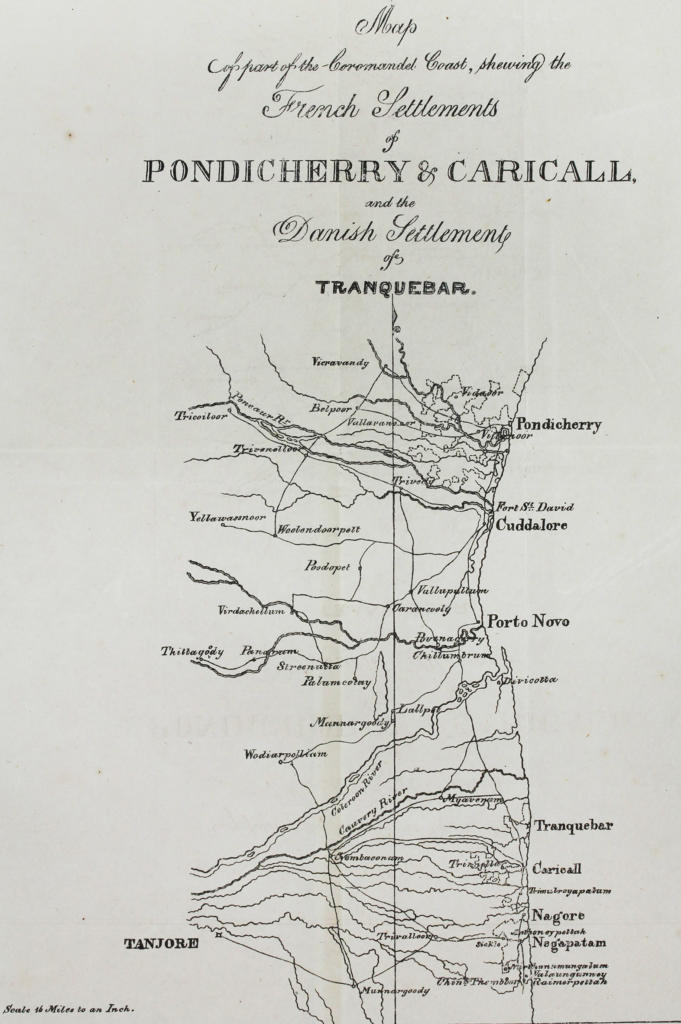
Map of the Coromandel Coast, showing the French settlements of Pondicherry and Caricall and the Danish settlements of Tranqebar, 1841 © Sarmaya Arts Foundation
The oldest infantry regiment in the Indian Army is the Madras Regiment, whose origins are credited to Major Stringer Lawrence aka ‘the father of the Indian army’. In charge of defending Fort St David, the British factory at Cuddalore, Major Lawrence built a native infantry force in 1748. It was largely involved in fighting French forces. Each British province had its own army. “Before 1895, India had three Presidency armies: Bengal, Bombay and Madras,” explained author and historian Dr Anirudh Deshpande in an interview with Sarmaya about India’s military history. “These armies amalgamated in 1895 to create the four command-based Indian army. The Presidency armies were recruited by the respective Presidencies and often their strength increased when European officers serving the Indian powers acceded to the British with their contingents.”
Vellore Mutiny
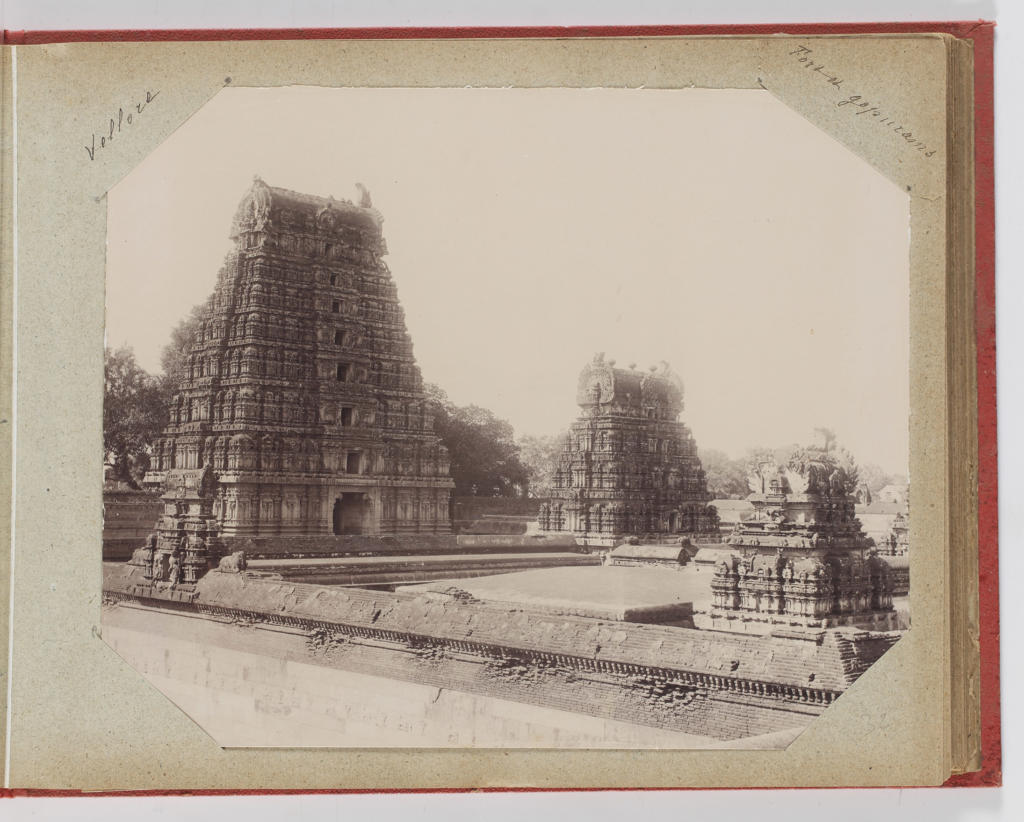
Jalakandeswarar Temple, Fort Vellore, late 19th century, unidentified photographer © Sarmaya Arts Foundation
The first rebellion by Indian soldiers against the British broke out at Vellore in 1806, half a century before the better-known Revolt of 1857 in the north. The cause was a new dress code enforced by the Madras Army that forbade the displaying of caste marks, which offended Hindu soldiers, and the growing of beards and moustaches, which hurt the sentiments of Islamic troops. Turbans were replaced with hats made of pig or cow leather instead of turbans and the front of the new uniforms resembled a cross, causing offense to soldiers of both faiths. Sepoys who refused to obey the new dress code were punished, which prompted a widespread mutiny with rebels seizing Vellore Fort and killing over a hundred British soldiers and officers. The revolt was quashed by the British in a matter of hours and over 350 Indians had lost their life by the end of the bloody episode. The involvement of the slain Tipu Sultan’s sons in the rebellion prompted the EIC to exile the family to Calcutta where they would spend out their remaining days.
Blended architecture
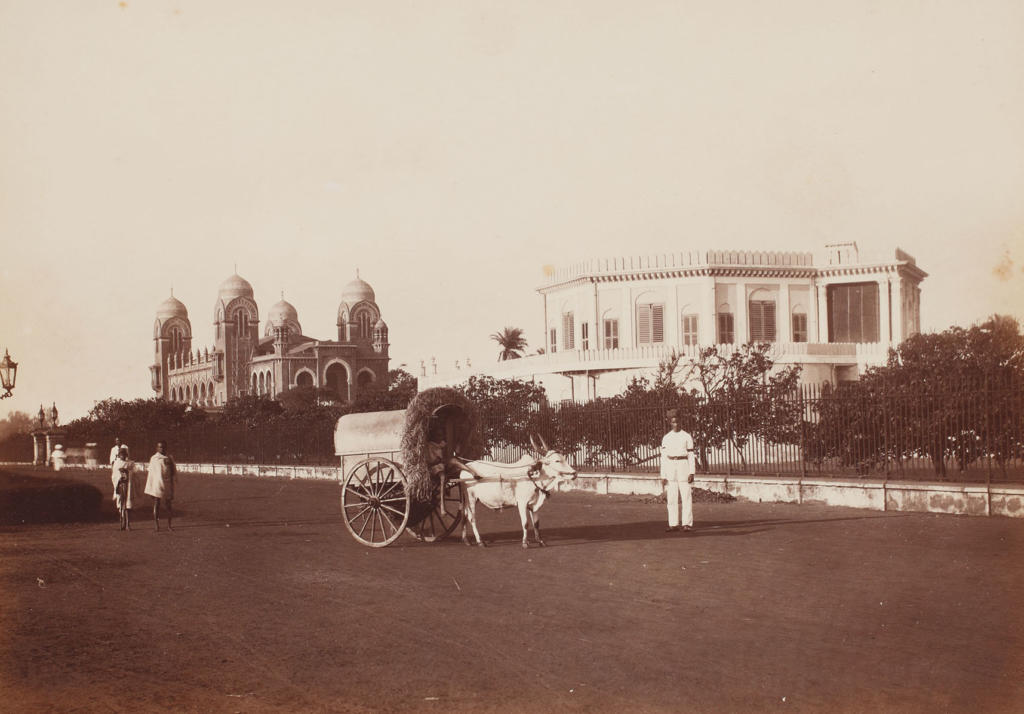
Senate House and Marine Villa, Madras, late 19th century, attributed to Nicholas Penn © Sarmaya Arts Foundation
Indo-Saracenic architecture evolved from a growing British fascination with the aesthetics of the Subcontinent, fed by artists of the picturesque like the Daniells and informed by the Company’s political need to forge a design legacy of their own. Most Indian cities with a British presence boast examples of this style, but the debut of this experiment happened in Madras. Chepauk Palace, the city residence of the Nawab of Arcot, was the first structure in India to be constructed in the Indo-Saracenic mold. Completed in the 1760s, the Palace features some early drafts of classical elements of this style, like the wide arches and pretty carvings. Other important public structures like the Madras High Court and the Senate House were also built along Indo-Saracenic lines.
Railway roots
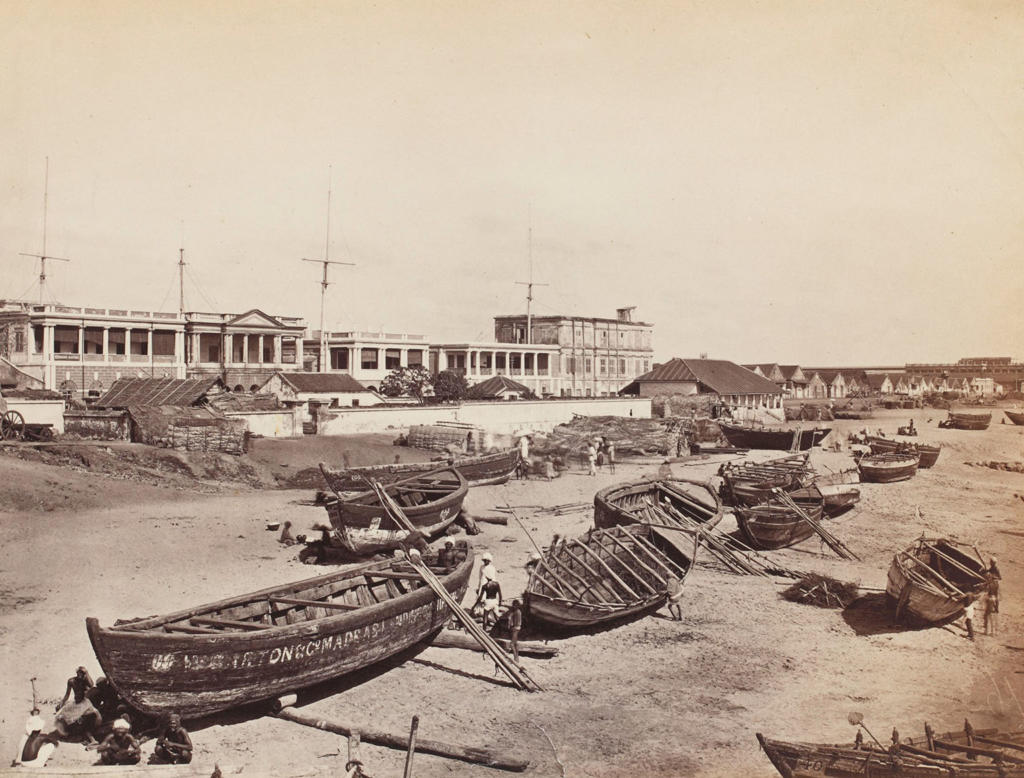
Madras harbour with a distant view of Royapuram Railway Stn (building on the extreme right), late 19th century, unidentified photographer © Sarmaya Arts Foundation
The first rail line in India was laid in 1836 in Madras Presidency. This three-mile line from Chintadripet to Little Mount in Madras city was created to transport material to quarries. So while Mumbai was home to the first passenger service in 1853, it was Madras that flagged off the first ever train journey on the Subcontinent. Read about this incredible history here. Built in 1856, Royapuram Railway Station, which you can see in the photograph above, was the first railway station of southern India and is today the oldest surviving railway station structure in India.
Hunger & rage
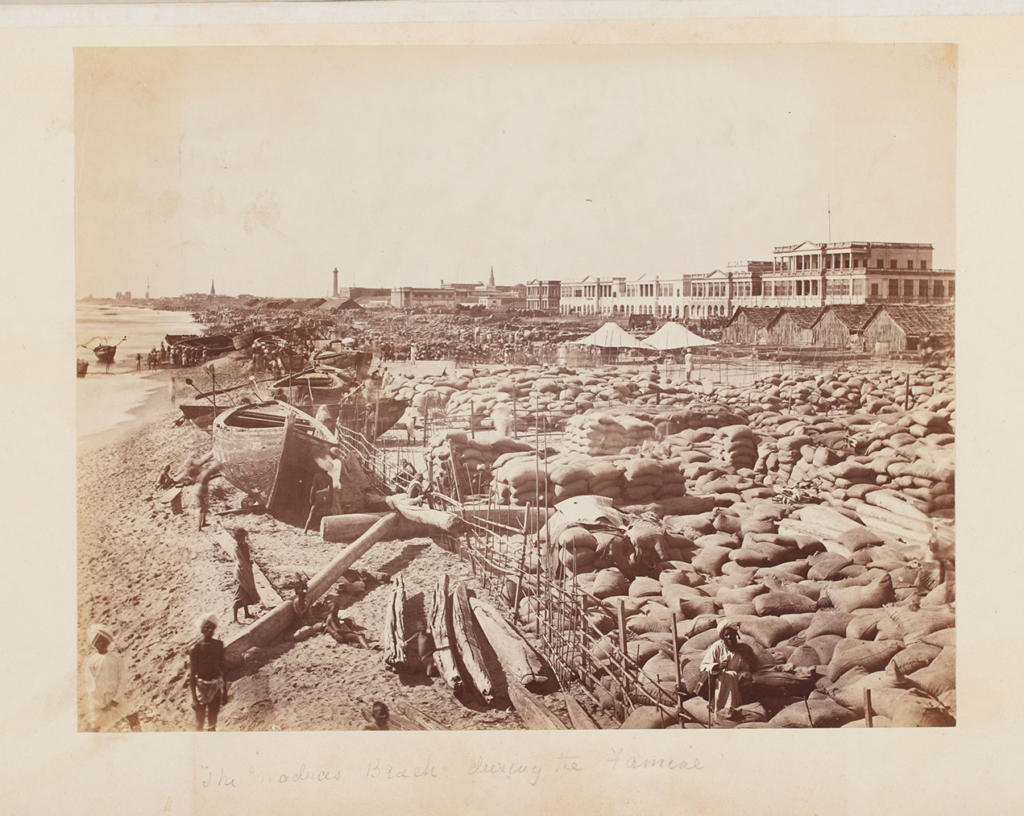
Rice bags on the beach during the famine of 1877, Madras, unidentified photographer © Sarmaya Arts Foundation
The Madras Famine of 1877 resulted from a drought in the Deccan that hit at the supplies of grain in the Presidency. It is conservatively estimated that about 55 lakh people died as a result of the drought, whose effects were deepened by policies that allowed the British to continue to export grain and further reduce budgets for welfare schemes. Photographs of starving citizens, including children, made a huge impact on the psyche of Madras and the Famine would serve as a call to political action for Indian nationalists.
Migration trails
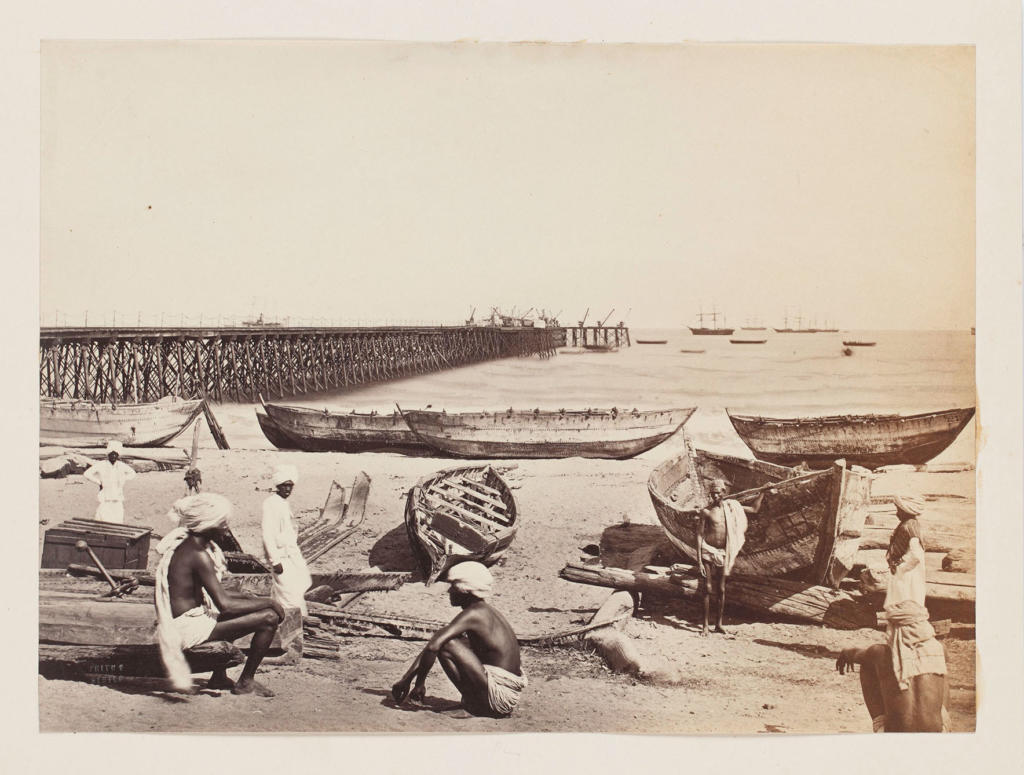
Pier at Madras harbour, 1870s, unidentified photographer © Sarmaya Arts Foundation
Another dark consequence of the famine of 1877 was its debilitating effect on citizens who already lived on the margins of society: the poor, the outcaste, the oppressed castes. In desperation to escape debts and poverty at home, they fell into the trap of indentured labour. The outlawing of slave labour created a demand for workers who would tend to British sugarcane and other plantations in places like the Caribbean islands, South Africa, Mauritius, Sri Lanka, Malaysia, Myanmar and Fiji. It is estimated that over a million Indians set sail in search of a better life on three-to-five-year contracts only to be exploited brutally abroad with no means of returning—most of them were from the Bengal Presidency and the United Provinces, but many also migrated from Madras Presidency. In fact, Tamil labourers were a big part of his support base when a young barrister called MK Gandhi launched his satyagraha movement in South Africa.
Freedom movement
Almost from the start of EIC’s occupation of Madras, there were rebellions, protests and revolts against aspects of British rule, from its thirst for expansion into territories held by native rulers to its tone-deafness in matters of faith to its support of proselytising Christian missionaries. The devastation caused by famines and worsened by British policies; the rise of a native press and founding of newspapers like Madras Courier, The Hindu and Swadesamitran; and the rising political awareness spreading throughout the Subcontinent, all played a role in the founding in 1884 of the Madras Mahajana Sabha, considered to be one of the predecessors to the Indian National Congress. Madras would play a vital role in the freedom movement, giving the country such stalwarts as KC Rajagopalachari, Ambujammal Desikachari and K Kamaraj. It was also the adopted home of Annie Besant, President of the Theosophical Society and a powerful British proponent of Indian self-rule.
Feminist stirrings
Madras was the first legislature in British India to pass the women’s suffrage resolution by a considerable majority in 1921. The Presidency benefited greatly from the work of path-breaking feminists like Annai Meenambal Shivaraj, Dr Muthulakshmi Reddy and RS Subbalakshmi. The women leaders of Madras fought to end child marriage, championed education for girls and advocated for the rights of widows, devadasis and Dalits.
Dravidian pride
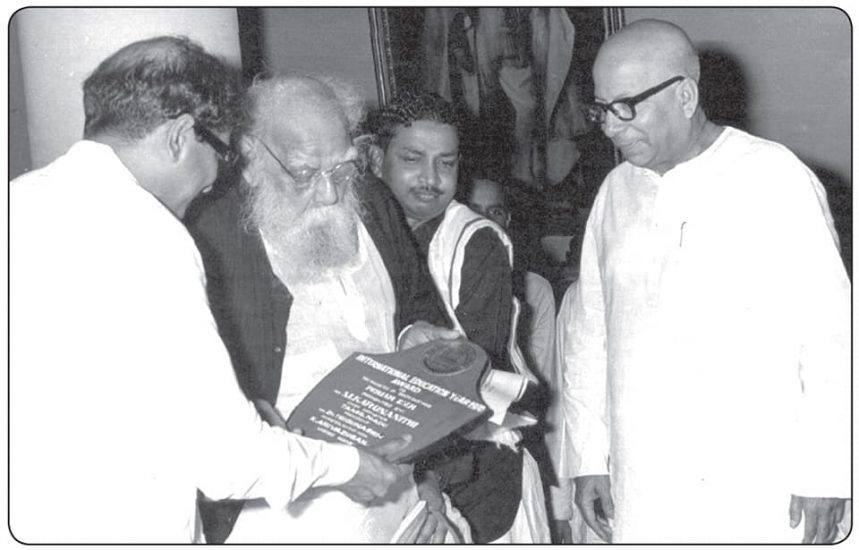
EV Ramasamy aka Periyar (centre). Image courtesy Wikipedia Creative Commons
Even as Indians became increasingly conscious of the inequities wrought by colonial rule, another, even older divide began to make itself felt within the nationalist movement itself: casteism. To shake the dominance of Brahmins in politics and governance, the Justice Party was founded in Madras in 1916 with the mission to give non-Brahmins equal representation in civil society. While the Party didn’t last for very long, it set the stage for a Dravidian consciousness to sweep through the region. It was another activist from Madras Presidency, EV Ramaswamy aka Periyar, who would eventually transform the landscape of modern Tamil politics forever. Led by Periyar, the Self-Respect Movement and Dravidar Kazhagam sought to eradicate all discrimination on the basis of caste, class or creed.

